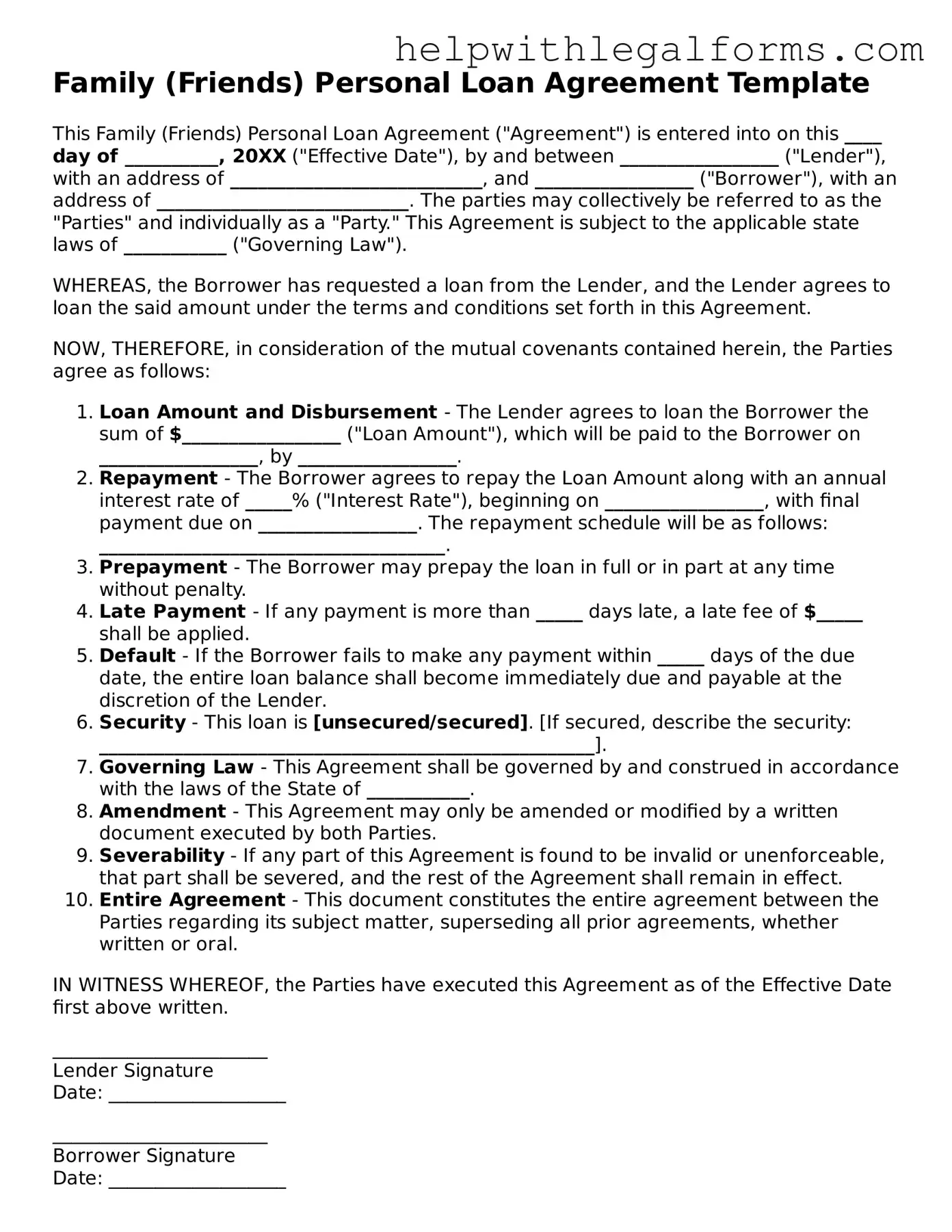What is a Family (Friends) Personal Loan Agreement?
A Family (Friends) Personal Loan Agreement is a document used to outline the terms of a loan between individuals who have a personal relationship, typically family members or friends. This agreement specifies the loan amount, interest rate (if any), repayment schedule, and any other conditions related to the loan. Its purpose is to provide clarity and protect the interests of both parties involved.
Why should I use a Family (Friends) Personal Loan Agreement?
Using such an agreement helps to prevent misunderstandings and disagreements between the lender and the borrower by clearly setting out the terms of the loan in writing. It can also serve as legal evidence of the loan terms if any disputes arise or if the matter is brought to court. Further, it helps to ensure that both parties are serious about the arrangement and understand their responsibilities.
What key elements should be included in the agreement?
A comprehensive agreement should include the full names and contact information of the parties involved, the loan amount, interest rate (if applicable), repayment schedule, late payment policies, and any collateral securing the loan. It's also wise to include what happens if the borrower can't repay the loan.
Is interest necessary in a Family (Friends) Personal Loan Agreement?
Charging interest is not mandatory. However, including an interest rate, even a minimal one, can provide an incentive for timely repayment and compensate the lender for the opportunity cost of lending the money. If interest is charged, it should adhere to applicable state laws to avoid being considered usurious.
How can I ensure the agreement is legally binding?
To make the agreement legally binding, all parties involved should sign and date the document. It may also be notarized for additional legal validation. Ensure that the agreement complies with state and federal laws, especially regarding interest rates and lending practices.
Do I need a lawyer to create a Family (Friends) Personal Loan Agreement?
While it's not strictly necessary to have a lawyer draft the agreement, consulting with a legal professional can ensure that the agreement complies with relevant laws and fully protects your rights. A lawyer can also help address any specific concerns or unique circumstances related to the loan.
Can the terms of the agreement be modified after it has been signed?
Yes, the terms of the agreement can be modified, but any changes should be agreed upon by all parties in writing. The amended agreement should be signed by everyone involved, similarly to the original agreement, to ensure that the changes are legally enforceable.
